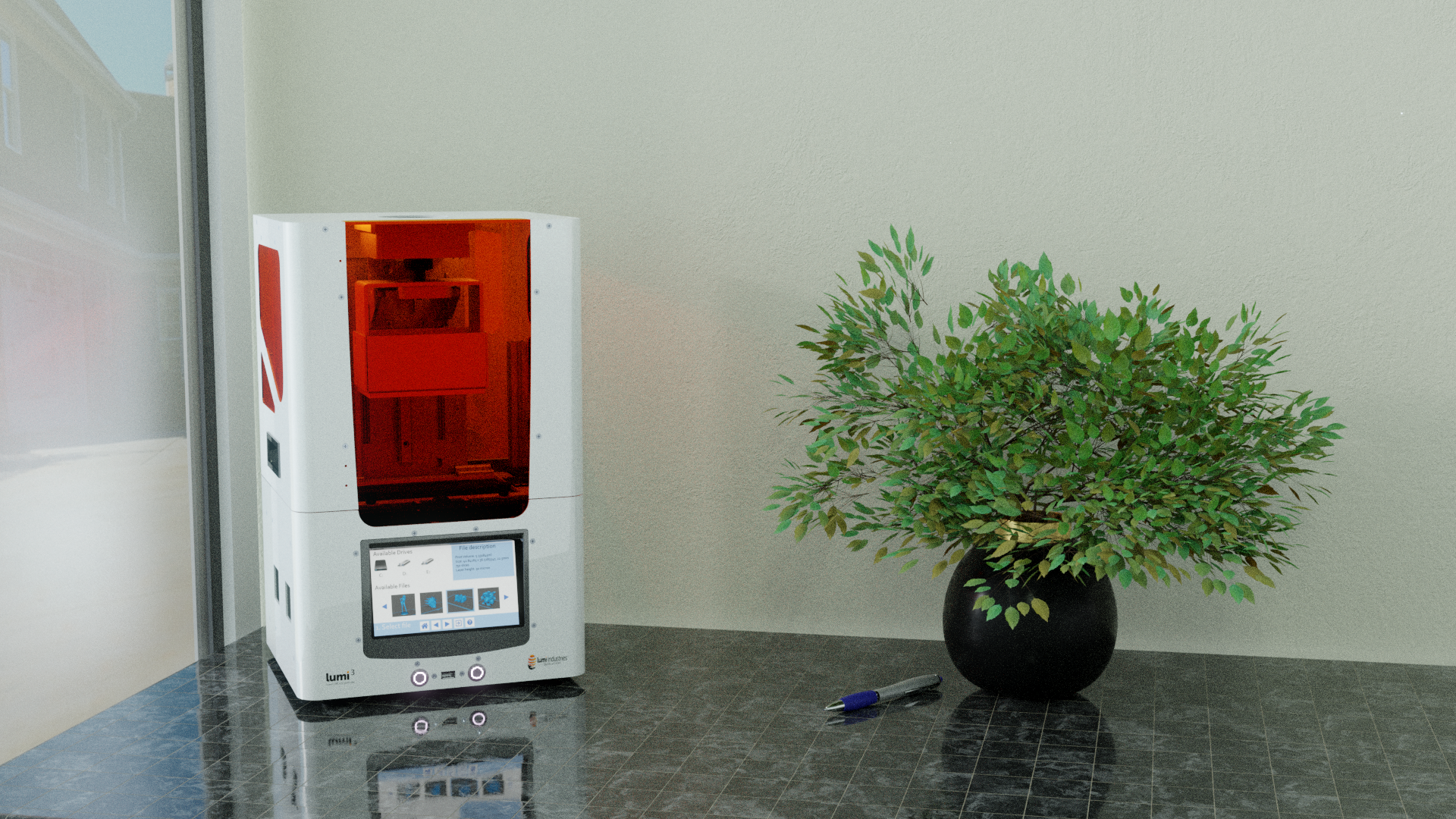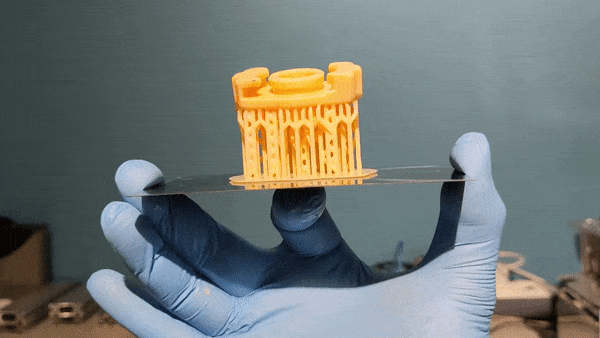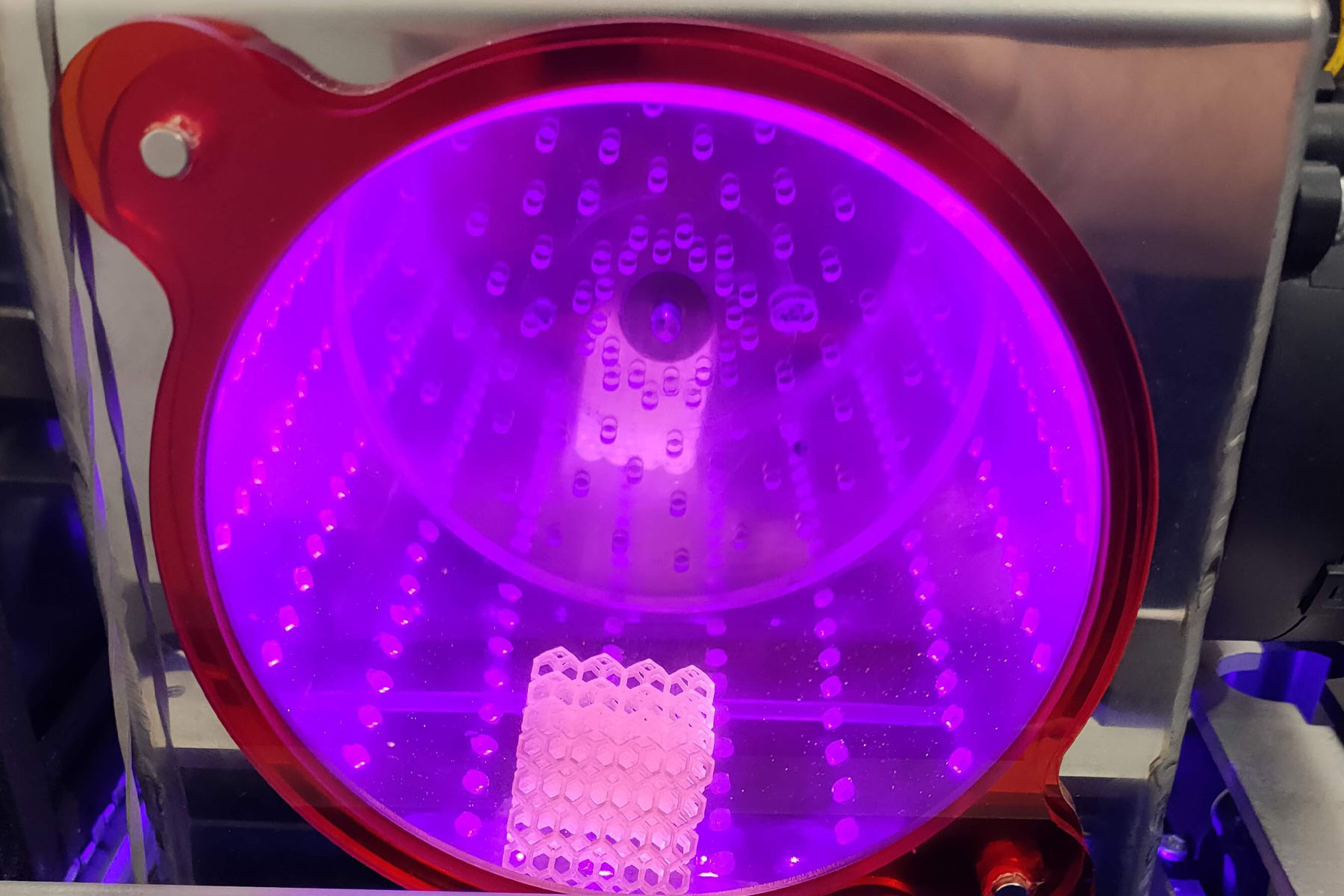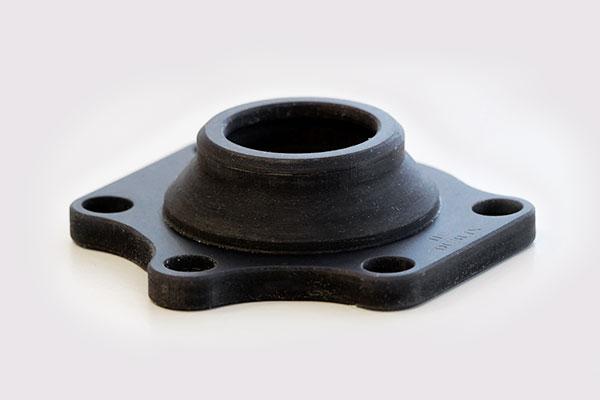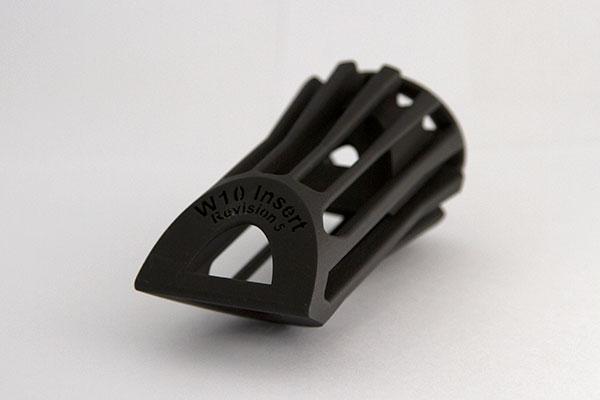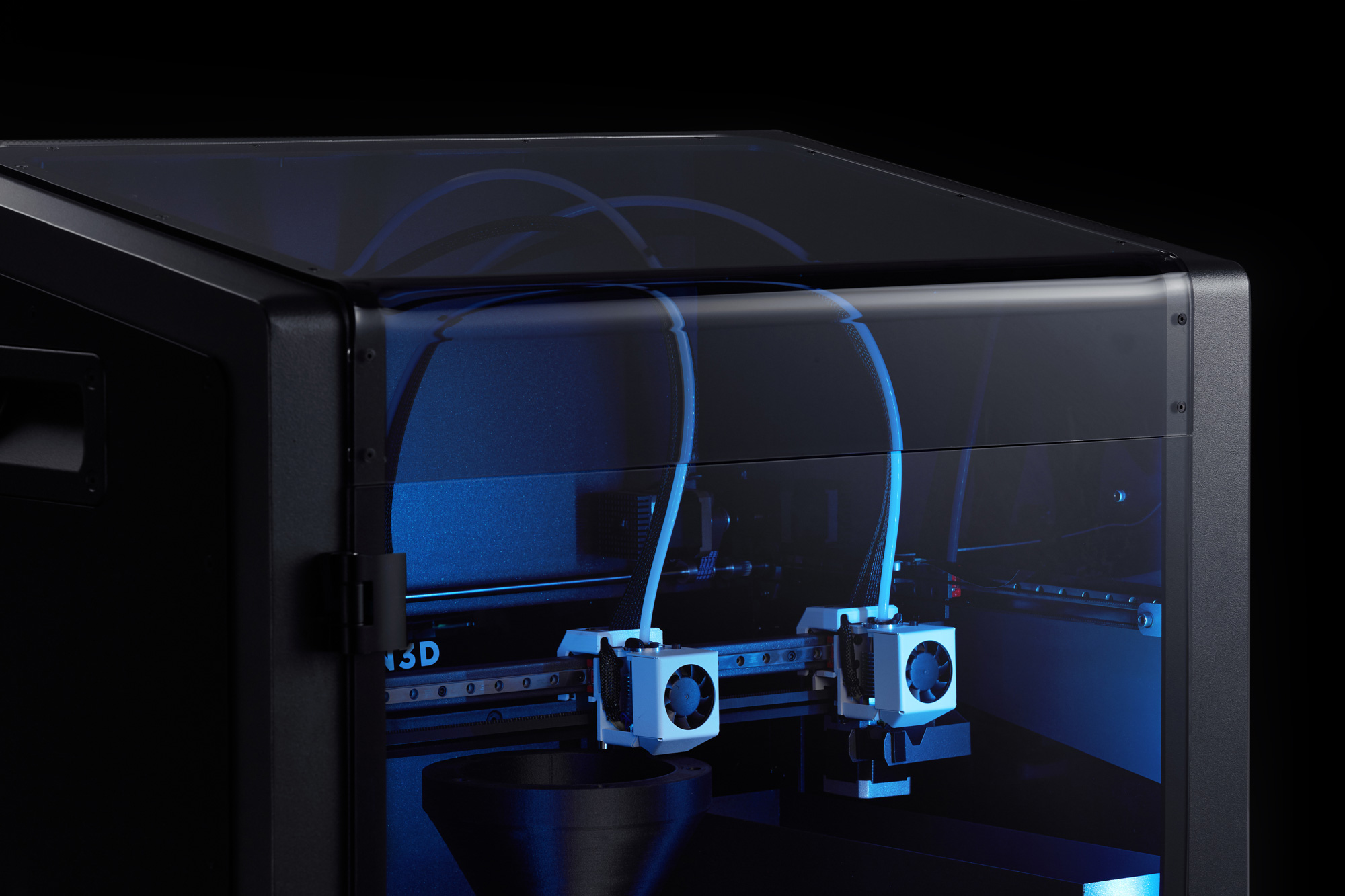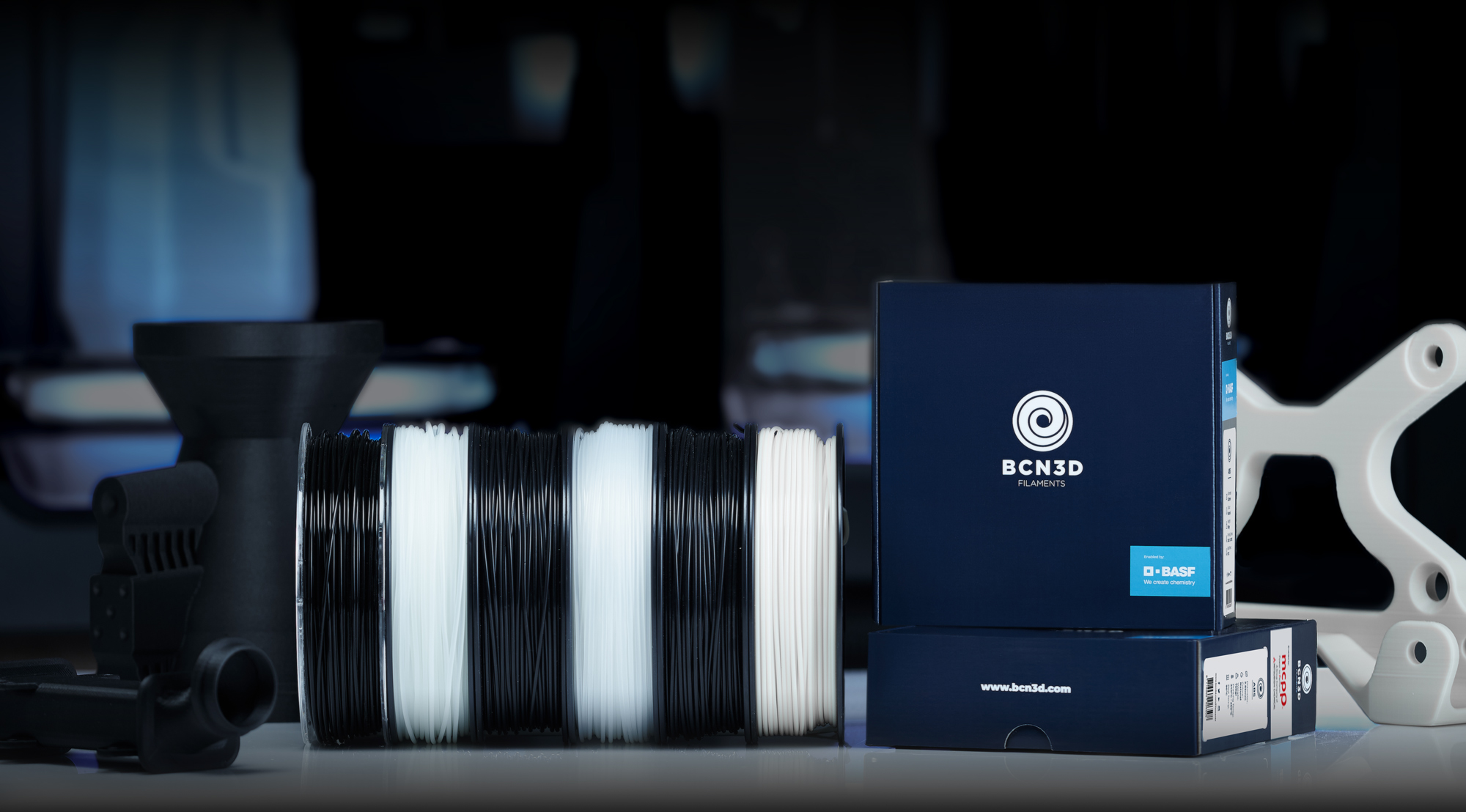3D Printing News Briefs, May 18, 2020: Fraunhofer, Formnext, Visagio & DiManEx, BCN3D Technologies
In today’s 3D Printing News Briefs, Fraunhofer will soon discuss adoption of Industry 4.0-related technologies in a webinar, and we’ve learned that Formnext 2020 is still planned for this November. Moving on, Visagio and DiManEx have announced a partnership. Finally, BCN3D’s technology was used to make an interesting event installation.
Fraunhofer’s Industry 4.0 Webinar
![]() Tomorrow, May 19th, the Fraunhofer Project Center (FPC) at the University of Twente will be holding a free webinar called “The Road to Digitalisation” that explains some of the challenges in adopting technologies related to Industry 4.0, such as 3D printing, as well as the solutions. Industry 4.0 is about optimization, and can offer companies many benefits, such as increased revenue, better quality, and reduced cycle times and costs. But, it can be a tough journey to start, and companies looking to start could use some help.
Tomorrow, May 19th, the Fraunhofer Project Center (FPC) at the University of Twente will be holding a free webinar called “The Road to Digitalisation” that explains some of the challenges in adopting technologies related to Industry 4.0, such as 3D printing, as well as the solutions. Industry 4.0 is about optimization, and can offer companies many benefits, such as increased revenue, better quality, and reduced cycle times and costs. But, it can be a tough journey to start, and companies looking to start could use some help.
“Industry 4.0 is all about optimization; from managing big data to efficiency in the production line. All this aims at enabling businesses to make quicker, smarter decisions while minimizing costs. This webinar sets out to explain the challenges and to offer solutions in the adoption of I4.0 related technologies.”
The webinar, featuring Join Biba Visnjicki, Managing Director of FPC, and Thomas Vollmer, Head of Production Quality Dept. from Fraunhofer IPT, will last 60 minutes; register for free here.
Formnext 2020 Still a Go in Frankfurt
 As many places in the world are cautiously reopening after recent mass shutdowns due to the COVID-19 pandemic, we need to look to the future. In that vein, Mesago Messe Frankfurt GmbH is still planning to hold the AM industry’s biggest event, formnext 2020, this November 10-13. Recently, the Federal Government and the Federal States of Germany ruled that trade shows are no longer under the ‘major events’ category for health risks, but the health of all the employees, exhibitors, and visitors are still considered the highest priority if the event does indeed take place this fall. That’s why the exhibition organizer is working around the clock to develop an updated health concept, such as introducing contact tracing and decreasing visitor density, along with a supplementary digital/virtual program.
As many places in the world are cautiously reopening after recent mass shutdowns due to the COVID-19 pandemic, we need to look to the future. In that vein, Mesago Messe Frankfurt GmbH is still planning to hold the AM industry’s biggest event, formnext 2020, this November 10-13. Recently, the Federal Government and the Federal States of Germany ruled that trade shows are no longer under the ‘major events’ category for health risks, but the health of all the employees, exhibitors, and visitors are still considered the highest priority if the event does indeed take place this fall. That’s why the exhibition organizer is working around the clock to develop an updated health concept, such as introducing contact tracing and decreasing visitor density, along with a supplementary digital/virtual program.
“We remain convinced of the unique value and advantages of a physical exhibition. And although digital interaction will never be able to replace face-to-face contact, it does offer more scope than previously thought possible only a few weeks ago,” stated Sascha F. Wenzler, Vice President of Formnext, Mesago Messe Frankfurt GmbH.
“Ultimately, even in these challenging times, we want to organize a trade show that is as responsive as possible to the current situation and the needs of participants and the market.”
Visagio and DiManEx Partnering to Improve AM Supply Chains
Management consultancy Visagio Ltd and DiManEx BV are partnering to strengthen end-to-end 3D printing usage in supply chains. Companies are looking to conquer supply base disruptions, and by pairing Visagio’s supply chain services with DiManEx’s end-to-end 3D printing platform, they can do so by digitizing their inventory and 3D printing parts on demand, which can delivered all over the world. The collaboration is a representation of how both companies address market needs, especially in these challenging times as COVID-19 disrupts the global supply and demand process.
“Companies are increasingly looking for ways to optimize their supply chains and mitigate risks, such as those brought about by pandemics or geo-political tensions. Our platform embeds 3D printing in supply chains easily, realising the concept of ‘Digital Inventory at your Fingertips, Ordered at a Click of a Button’. Coupled with Visagio’s industry and management expertise, this is a winning combination for supply chain optimization,” said Tibor van Melsem Kocsis, the Founder and CEO of DiManEx.
3D Printed Cisco Live 2020 Installation
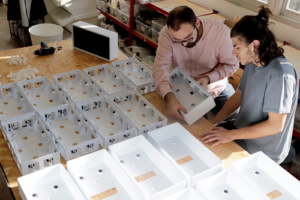
Thanks to 3D printing, it was possible to quickly iterate not only the main design, but also all the smaller parts of the internal mechanisms.
Speaking of collaborations, Barcelona data interpretation firm and design studio Domestic Data Streamers pairs data and arts with storytelling to develop “participatory projects” for community building and education. Its workshop has long used 3D printers from BCN3D Technologies, and recently turned to the technology again to create an installation for the Cisco Live 2020 event. The studio wanted to give attendees “a better experience” by displaying the event schedule on an interactive Recommendation Wall of clickable screens; once clicked, the animated image turned into a QR code, which visitors could scan for more information. The screens had to be custom-made, and so Domestic Data Streamers turned to its in-house printer farm, and the BCN3D Epsilon 3D printer. They used PETG to print over 40 of the main covers in just four weeks, which equaled major cost savings.
“The printers work very well, we count on a very high success ratio, and the support from the team is always quick and helpful,” said Pol Trias, the Head of Design at Domestic Data Streamers.
“It gave us great agility when it comes to functionally and aesthetically validating the designs at a very low cost…our processes were more efficient and much faster thanks to our BCN3D Epsilon.
“This could not have happened without 3D printing. For a project like this one, where you want high-quality results in a short time and within a limited budget, there is no better option than 3D printing.”
You can learn more about the project here, or check out the video below.
Discuss these stories and other 3D printing topics at 3DPrintBoard.com or share your thoughts in the Facebook comments below.
The post 3D Printing News Briefs, May 18, 2020: Fraunhofer, Formnext, Visagio & DiManEx, BCN3D Technologies appeared first on 3DPrint.com | The Voice of 3D Printing / Additive Manufacturing.
Formnext + PM South China Partners with Prominent Industry Groups for Debut Edition
Formnext + PM South China has confirmed official partnerships with the Aachen Center for Additive Manufacturing (ACAM) and the Verband Deutscher Maschinen-und Anlagenbau (VDMA), two of the most recognised advanced manufacturing groups in Germany. This strategic collaboration will bring benefits to the Chinese market by importing some of the most recent technologies and products in additive manufacturing, powder metallurgy and advanced ceramics from Germany.
Formnext + PM South China is a professional event for additive manufacturing, powder metallurgy and advanced ceramics, which will be held from 9 – 11 September 2020 at the Shenzhen World Exhibition and Convention Center. Located in one of the key cities of the Greater Bay Area, the show will put a strong focus on the Chinese market and cover an array of additive manufacturing solutions and materials, smart manufacturing technologies and equipment, powder metallurgy products, ceramic materials and forming technologies, post processing solutions and more.

With Formnext + PM South China’s mission to shorten the manufacturing cycle time with lower cost and higher quality by integrating advanced materials, equipment and technical solutions into the manufacturing process, the organisers are bringing this to the fore through the cooperation with ACAM and the VDMA. ACAM will co-organise the Discover 3D Printing Seminar during the fair, and showcase the latest additive manufacturing technologies and applications in Germany. VDMA will group their members in a pavilion to expand their overseas market, and to boost the development for enterprises in the Chinese manufacturing industry.
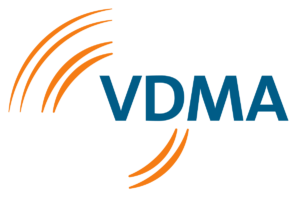
Dr-Ing Kristian Arntz, Managing Director and Partner of ACAM, and Dr Markus Heering, Managing Director of the Additive Manufacturing Working Group of VDMA expressed their excitement about the new fair. “ACAM are excited about Formnext + PM South China, and will offer our services covering further education for companies as well as consulting and developments in the relevant areas of additive manufacturing to Chinese and other Asian manufacturing industries. We expect it to be a great show as the market is emerging and additive manufacturing is becoming more and more important to many companies in this area,” stated Dr-Ing Arntz.
Dr Heering said: “For our 150 member companies, this new trade fair creates an interesting access to the important Chinese market and the growing markets of the region. At the same time it offers the perspective of assisting the cooperation with this important region. We also see the opportunity to strengthen Formnext in Frankfurt as the world’s leading trade fair for additive technologies through this event together with our partners.”

Founded in 2015, ACAM is a one-stop-shop for additive manufacturing which combines the expertise from world-class institutes, research centres and start-up companies. They offer access to innovative know-how, training and education, process, software and systems engineering as well as customised services covering all aspects of additive manufacturing technologies. Some of the members of the ACAM community include Danfoss, GE Additive, Linde, Oerlikon, Okuma, Stratasys, Toyota and more.
VDMA has a long history in the mechanical engineering industry since its establishment in 1892. With around 3,300 members, it is the largest network organisation for mechanical engineering in Europe. The Additive Manufacturing Association within VDMA offers a comprehensive platform designed to tie up all companies and research institutes participating in the value supply chain. They put a strong focus on the user perspective and the potential of the variety of methods in 3D printing.
Renowned Chinese industry alliances facilitate cohesion between powder metallurgy and 3D printing
Apart from the two well-known German industry associations, the China Powder Metallurgy Alliance (CPMA) and the China Ceramic 3D Printing Alliance will also be participating at the new show by taking part in the concurrent event programme. The former has been an important force in enhancing the development of powder metallurgy in China since 2010; the latter is supported by a number of top-rank academic institutes and 3D printing companies, and aims to foster the expansion of the Chinese ceramic 3D printing industry.
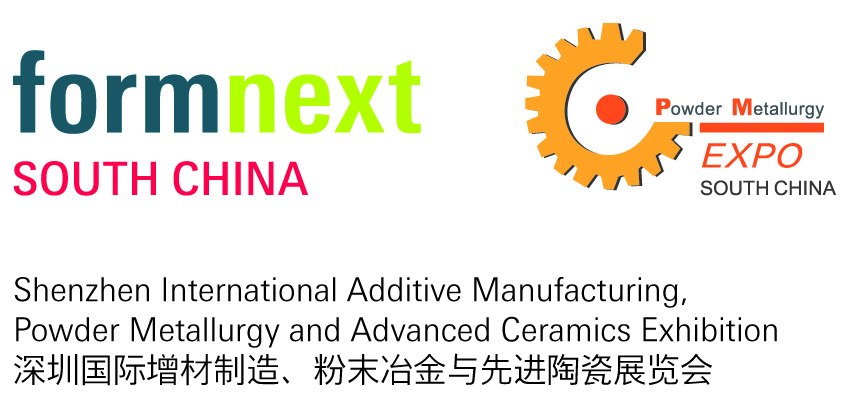
A number of leading brands have already confirmed their participation for the first edition. They include 3DCERAM, 3D SYSTEMS, Artec 3D, BMF Material Technology, CFINE, CNPC Powder, Evonik Specialty Chemicals, GF Machining Solutions, GKN Sinter Metals, Hujin, Longding, ONLY, Quick Beam Tech, Russell Finex China, Shenzhen Shunde Nuoen, Sinterzone, Sunshine Machinery Equipment, Shining 3D, SLM Solutions, Sympatec GmbH – System, Unique Injection Molding System, Visitech, Zhongdexiang, Z Rapid Technologies and more.
Formnext + PM South China is jointly organised by Guangzhou Guangya Messe Frankfurt Co Ltd and Uniris Exhibition Shanghai Co Ltd and forms a part of a series of international events including:
- Formnext: 10 – 13 November 2020, Frankfurt, Germany
- Formnext + PM South China: 9 – 11 September 2020, Shenzhen, China
- Formnext Forum Tokyo: 24 – 25 September 2020, Tokyo, Japan
- Asiamold: 2020, Guangzhou, China
- Rosmould: 8 – 10 June 2020, Moscow, Russia
To find out more about the 2020 show, please visit www.formnext-pm.com or email formnext-pm@china.messefrankfurt.com.
– end –
Background information on Messe Frankfurt
Messe Frankfurt is the world’s largest trade fair, congress and event organiser with its own exhibition grounds. With more than 2,600* employees at 30 locations, the company generates annual sales of around €733* million. We have close ties with our industry sectors and serve our customers’ business interests efficiently within the framework of our Fairs & Events, Locations and Services business fields. One of the Group’s key USPs is its closely knit global sales network, which extends throughout the world. Our comprehensive range of services – both onsite and online – ensures that customers worldwide enjoy consistently high quality and flexibility when planning, organising and running their events. The wide range of services includes renting exhibition grounds, trade fair construction and marketing, personnel and food services. Headquartered in Frankfurt am Main, the company is owned by the City of Frankfurt (60 percent) and the State of Hesse (40 percent). For more information, please visit our website at: www.messefrankfurt.com
* preliminary figures 2019
Background Information on Uniris Exhibition Shanghai Co Ltd
Uniris Exhibition Shanghai Co Ltd is the first organisation to hold professional exhibitions and conferences for powder metallurgy and advanced ceramics in China. For years, it has focused on the exploration of the power metallurgy and advanced ceramics industry and market analysis, and spent over 10 years cultivating exhibitions and accumulating customers
The post Formnext + PM South China Partners with Prominent Industry Groups for Debut Edition appeared first on 3DPrint.com | The Voice of 3D Printing / Additive Manufacturing.
80 additive manufacturing experts predict the 3D printing trends to watch in 2020
Formnext 2019: A lot of new players, but where is the business value?

As the end of the year approaches, the additive manufacturing industry gathers in Frankfurt for the biggest event of the year: Formnext. For a week in November, the entire world of additive manufacturing, machine vendors, material providers, post-processing specialists, service bureaus and software developers showcase their latest products and development.
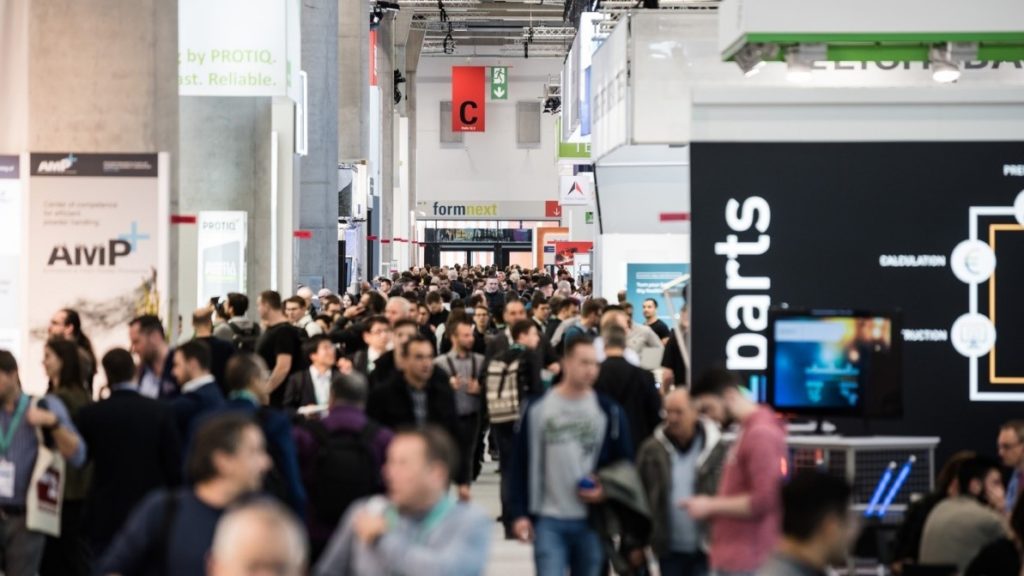
Like every year it’s the occasion for the traditional actors to show that they are the big players and compete on having the biggest stand of the show, and for everybody to unveil their latest machine, material, software, or partnership. It is the main occasion for companies to make announcements and to shine in front of an ever-expanding crowed of professional visitors.
The 2019 edition of this yearly gathering was by far the biggest ever: 852 exhibitors representing 35% growth over the previous year and 34,500 visitors; 28% more than last year. In order to accommodate everybody, this year’s Formnext was split into four halls. It would take several days for a visitor to view and interact with all the companies exhibiting.
At Blueprint we try to keep a close eye on the industry, staying close to the news to be informed of the latest developments, new machines, and new companies on the market, but we were surprised by the number of company names we didn’t recognize. One might think that most of the new companies would be Asian companies trying to expand to the European market, but talking with the different newcomers we learned that a large number were established European machine tool specialists entering additive manufacturing. We were surprised to see the number of new machines that were very similar to existing technologies and very few new manufacturing processes. While the 2013 hype brought a lot of very similar desktop 3D printers, the recent news about AM successes in the end-use part manufacturing seems to have catalyzed a focus on new machines designed for manufacturing. While some are copying existing machines, including the same naming conventions, others are trying to keep the costs down by using standard off-the-shelf components. Surprisingly, every machine seems to have a level of engineering suggesting that heavy investment has been put into the projects; these are industrial companies making machines, not start-ups with little engineering experience and Kickstarter funding. But even with that obvious substantial investment, it is disappointing that the majority stick to imitating technologies invented 20 years ago rather than being truly innovative.
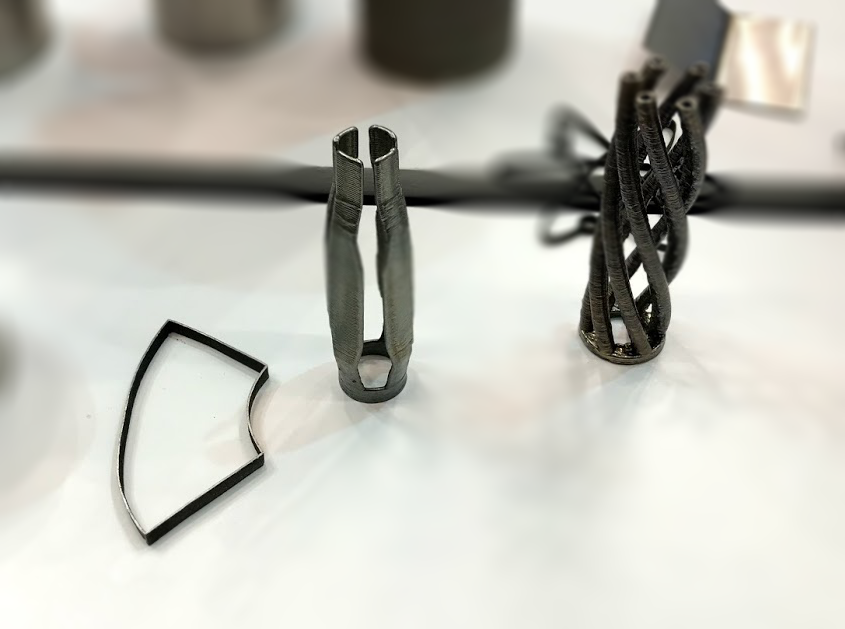
Stepping away from the actual machines and focusing on the parts on display, we started to have a very familiar feeling. While in the past some vendors have been guilty of showcasing parts made on competitors’ machines because their machine wasn’t ready, we don’t think that was the case here. The parts on display looked great, but a lot of them were just generic 3D printed designs available online, made to showcase the freedom of design of 3D printing but not demonstrating anything about the applications enabled by their machine. Once again this points to a lack of imagination and experience of those companies, most of them thinking they can just repeat what the competition has been doing years ago in order to be successful.
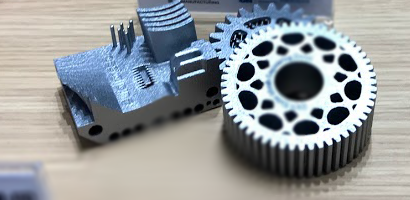
Just like that, we felt we were 5 years back in time, back when machine vendors slowly started to transition from prototyping machines to manufacturing machines. The biggest change was how manufacturers talk about their machines’ capabilities. While in the past we would hear about layer thickness, speed, heat tolerance, or strength, the conversation has evolved with the change of target market. When you are prototyping, you need machine capacity and you want to have a machine as flexible as possible to make the most diverse range of prototypes possible. Manufacturers are not inspired by the machine and material capacity, but more by the applications that machines enable. The message “Our new material has a heat deflection temperature of 150°C” became “Our material enables production of composite tooling for this type of resin matrix.”
In order to present machines as manufacturing tools, the established players have shifted to the business value proposition; most of them were showcasing case studies where a part enabled a customer to save money, compress a supply chain, or improve workers conditions. They were not selling machines but selling a solution to business problem using a machine.
On that front, we saw that many of the newcomers were at a disadvantage. None of them seemed to have figured out their differentiators or value propositions. Many are still trying to make machines to do everything and their only way to compete with the established players is on price. When price is your only differentiator, the only way to gain market share is to lower your price. Starting a race to the bottom is rarely a good idea, especially in a market as competitive as the additive manufacturing industry. We saw this happen to the desktop 3D printer market a few years ago and we can predict that a lot of the new entrants probably won’t exist anymore in a couple of years’ time.
Assuming the same 10% growth of the last 5 years, the number of industrial unit sales for 2020 is expected to be around 22,000. If we remove the market shares from historical players, large companies and unicorn startups, that leaves about 4,500 units to be sold worldwide by the new actors. Based on the Formnext 2019 exhibitor list, there are about 300 companies selling machines. That leaves each of these companies selling about 15 units with an average price of $50k.
Is an average revenue of $750k enough to keep most of those companies on the market? The answer to that question should be self-evident. Talking with people on the stands, we learned that some employees haven’t been paid for a few months, while other companies are hoping they can ship a machine by the end of next year. Even companies that investors have judged as successful by giving them unicorn status are struggling to get their machines out of the door. It is not rare to have to wait a couple of years between a machine announcement and the first public machine being installed. This is due to the complexity of having a capable and reliable machine suited for the industrial market. Showing that you can print a part is not enough for manufacturing; you must demonstrate that you can reach the same tolerances continuously. Cashflow then becomes critical for companies without initial backing. We suspect that the business plan of some of the new entrants might be to make announcement and enough noise to raise funding or be acquired. This can have a detrimental impact on our industry as it creates noise and confusion that distract potential customers from the real applications. We have seen many times customer deciding against buying a current, proven machine because they are waiting for the competitors one which was announced a year ago and is not coming out for another year.
Similar to the desktop market back in 2013, we can expect difficult times ahead for those newcomers and very fierce competition in the industrial market. With all the new entrants competing with very similar technology, the ones that can identify a clear differentiator and have a clear message on how they can solve a business problem will be the ones who stay afloat. Indeed, everyone needs to continue to improve additive manufacturing’s value proposition; remember, we are a small industry— 0.02% of manufacturing. Some say that 99.9% of people don’t understand 3D printing. This “noise” will hurt our industry; as professionals in the additive manufacturing space, it is our job to help articulate business value and educate our customers.
Loïc Le Merlus (Manager)
Loic leads the development of Blueprint’s algorithms that drive our proprietary analysis tools. He also works closely with many of our clients to analyze complex data and understand the economic impact that 3D printing and additive manufacturing could have on their businesses. In other words, he puts the numbers behind the hype. Loic has over 9 years leading projects to quantify the impact of the technology, working with users and vendors across the additive manufacturing industry.
Blueprint is an additive manufacturing consultancy, bringing together more than 15 years of knowledge and experience across the industry. As the world’s leading additive manufacturing consultancy, Blueprint regularly assists future-ready companies achieve additive success. Based in Eden Prairie, Minn., and Milford, U.K, the firm offers a unique, technology-agnostic perspective on all things additive, from strategic advice to design optimization services. More information is available online at www.additiveblueprint.com.
If you want to discuss this article or your additive manufacturing strategy, the team at Blueprint is here to help. Let’s say hello.
The post Formnext 2019: A lot of new players, but where is the business value? appeared first on 3DPrint.com | The Voice of 3D Printing / Additive Manufacturing.
dp polar GmbH & ALTANA Unveiled AMpolar ® i2 3D Printer at Formnext
Formnext, held from November 19-22 in Frankfurt, yielded a wealth of information about new products in the 3D printing world. This included the latest from dp polar GmbH, with added support by ALTANA, a specialty chemicals group headquartered in Wesel, Germany, upon the unveiling of the AMpolar ® i2 3D printer.
 This new 3D printing system offers a continuously rotating platform, resulting in high-precision parts produced up to 20 times faster—and in higher volume—in comparison to technology where the printhead moves instead. The AMpolar ® i2 features a build volume of 700 liters, which dp polar GmbH states is the largest build area for a 3D printer being used in the material jetting realm. The release of this printer will allow industrial users to move forward to the manufacturing of functional components rather than just rapid prototyping.
This new 3D printing system offers a continuously rotating platform, resulting in high-precision parts produced up to 20 times faster—and in higher volume—in comparison to technology where the printhead moves instead. The AMpolar ® i2 features a build volume of 700 liters, which dp polar GmbH states is the largest build area for a 3D printer being used in the material jetting realm. The release of this printer will allow industrial users to move forward to the manufacturing of functional components rather than just rapid prototyping.
The AMpolar ® i2 3D printer allows users to enjoy a varying range of materials simultaneously via multi-material jetting, uninterrupted—and is suitable for applications like electronics and assembly and ‘pick and place’ robotics.
“Our 3D production machine AMpolar® i2 currently has the largest build area and the largest installation space in the field of material jetting,” says Dr. Florian Löbermann, Managing Director of dp polar GmbH. “Combined with ALTANA’s know-how in material development, we are bringing a 3D printing solution to market that will give customers from a wide variety of sectors, including the automotive, aerospace, and medical technology industries, completely new possibilities for manufacturing their products.”
This also means that exponentially more users will be able to benefit from 3D printing and additive manufacturing. While savings is sometimes not realized immediately for those investing in expansive AM technology, hardware like the AMpolar ® i2 3D printer means that 3D printed medical devices like orthotics and prostheses, for example, can be created much more affordably and rapidly—also leaving the door open for easier customization as new iterations of designs are quickly formed and printed.
3D printing offers new levels of comfort—especially important for children who may have suffered through arduous fittings when using conventional methods—only to find out that they had nearly outgrown devices once they were delivered.
A 3D printed device can be easily adjusted for a new size, color, or even a different style, and takes just a fraction of the time to make, as we have seen in previous stories outlining new improvements by US researchers, optimization with simulators, new design software, and much more.
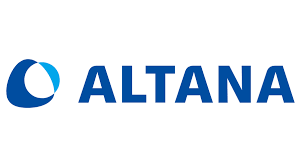 While they are able to offer critical support in the development of this new 3D printer, ALTANA quite literally has a stake in this project as they acquired part of dp polar in 2017.
While they are able to offer critical support in the development of this new 3D printer, ALTANA quite literally has a stake in this project as they acquired part of dp polar in 2017.
“The extremely close cooperation between mechanical engineering, machine development, and material development makes it possible to develop individual solutions for our customers and their specific requirements,” says Dr. Petra Severit, Chief Technology Officer of ALTANA AG. “In material development, we are focusing on our core competencies and at the same time expanding the application spectrum of our solutions in the highly innovative field of 3D printing.”
Discuss this article and other 3D printing topics at 3DPrintBoard.com.
[Source / Images: dp polar & ALTANA press release]
The post dp polar GmbH & ALTANA Unveiled AMpolar ® i2 3D Printer at Formnext appeared first on 3DPrint.com | The Voice of 3D Printing / Additive Manufacturing.
Formnext 2019: Highlights, Trends and Review
The more succinct way to sum up Formnext 2019 was: overwhelming. Whereas last year I had the feeling I knew where everything was, this time it was so big as to make you lose all sense of direction and placeness. The three halls with their ups and downs made this confusing as well. It also made appointments very hectic. I also spoke to a whole number of people who had missed entire halls. Having the halls separated by floor and even in different buildings is clearly not practical. Overall though everything was clear and well organized. This is now the established, definitive 3D printing show.
With 35% more exhibitors there were reportedly a 160 new companies exhibiting at Formnext. Indeed the overly crowded exhibitor dinner had more people going to it than some other 3D printing shows. Everything felt more crowded and bigger. In talking to a lot of exhibitors though they felt that Formnext has still maintained lead quality in the sense that there are few school kids and tourists but only industry people there. Being still a show with a lot of deals and meetings does mean that a lot of people are stand tied and don’t get to see the show. I myself had 45 meetings which was stupid of me really. But even then I only got to meet with 5% of all exhibitors.
If anyone was in any doubt about this being the definitive AM show, this year removed these doubts. It’s up to other shows to either champion a region or go into a vertical now because Formnext is it. It is still an accessible show for visitors although some flight and hotel prices were bordering on the silly. All in all the show felt short. I had a continual fear of missing out. I would have happily taken another day to explore all of the stands.
Key executives from all over the world were in attendance and all the major players in many verticals were represented. If you’re new to the industry or in the market for a post-processing machine, a printer or a service you should go to this show. This is your only opportunity to see everything and meet everyone. All the days were reasonably busy but Friday which was essentially stand holder filled. This day is perfect though to go around and check out the competition and see the things that you haven’t seen.
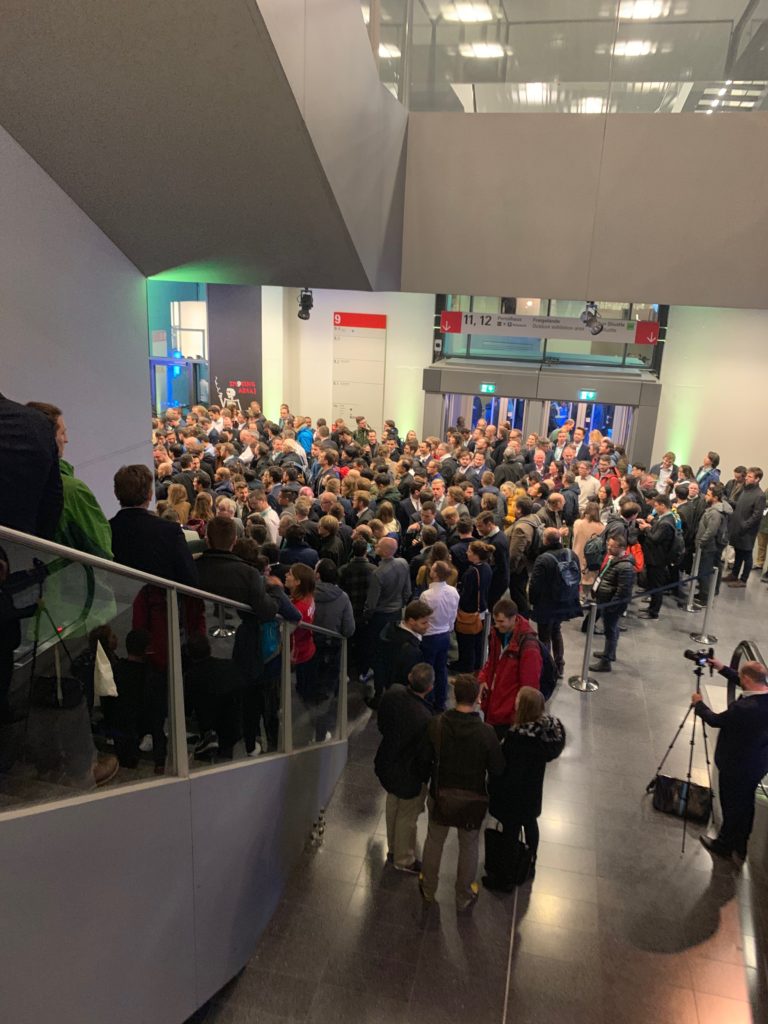
Waiting for the exhibitor party
The parties were off the hook with stands offering gin tonics, bands, super irritating house music. There were parties and events late into the night. Amidst all the large stands and blow out budget activities it can be difficult to get noticed as a small or medium company. You could easily spend a 100k and formnext and get no attention. For small firms, I’d advise them to make it more about networking and entertaining than trying to make a splash with a stand. Medium to large firms will need to think harder and work harder to get noticed at this show. Just a few canapes or some designed multi-story stand is not enough to get noticed here.
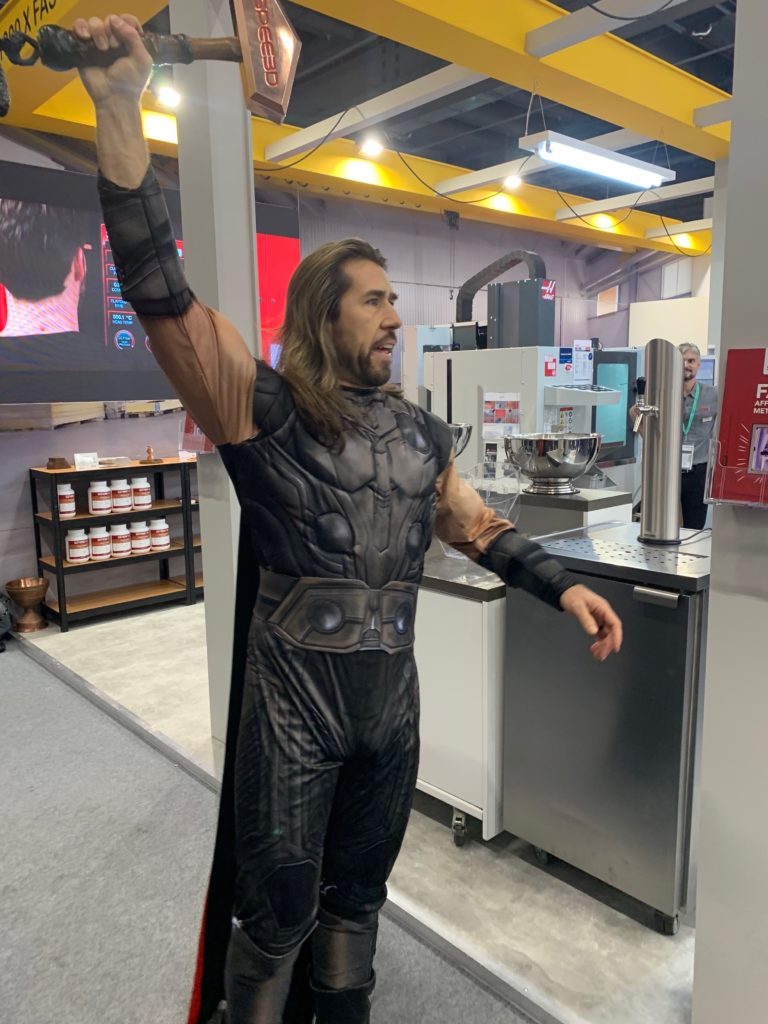
Thor at the Spe3D stand.
For PR and press people it was a hectic time as well. Some were trying to get invitations a few days before the event when most press was booked full. Reportedly there was at least one press conference with only one attendee. Please please don’t do press conferences they’re silly. If you want to release a general update on your firm then try to release it along with interesting news a few weeks before formnext. There is actually a lull in press releases then as everyone awaits for formnext and if we publish then this will drive traffic to your stand. Also, a lot of people were trying to tempt us with case studies or general updates and this simply wasn’t enough. We were overwhelmed by the amount of news. Feel free to try to break significant news during formnext but I’d advise you to do so before.
General spend is high and expertise is growing. Many stands were very nice, accessible and informative. Once again a box of parts or a mysterious box-like machine is not going to cut it. It still surprised me that so few stands clearly explained in large words what the heck they did to the passers-by.
Highlights
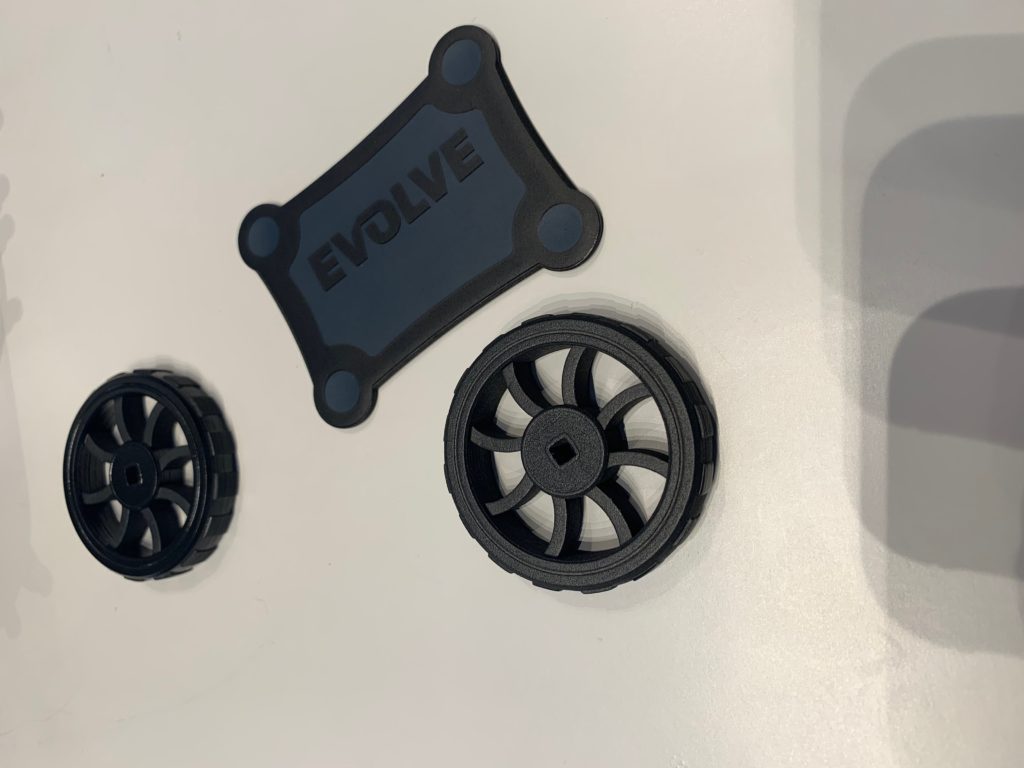
1. To me, the number one highlight was Evolve Additive. I’ve never seen parts that crisp looking with such good labeling quality. If the throughput and pricing hold up this long stealthy startup could make good on its 3D printing polymers for consumer applications promise. Parts were small and low and I wonder how big they can make it go but it is very promising.
2. Aquasys water-soluble support for ABS, PC and many other FDM materials. Support for FDM has sucked so far. Either it is breakaway which is painful to your hands and bottom line or its super nasty in terms of materials or it is PVA which sucks to work with. With a specialized support company developing support materials now the support situation could improve. Given the huge installed base of FDM systems this is a significant market.
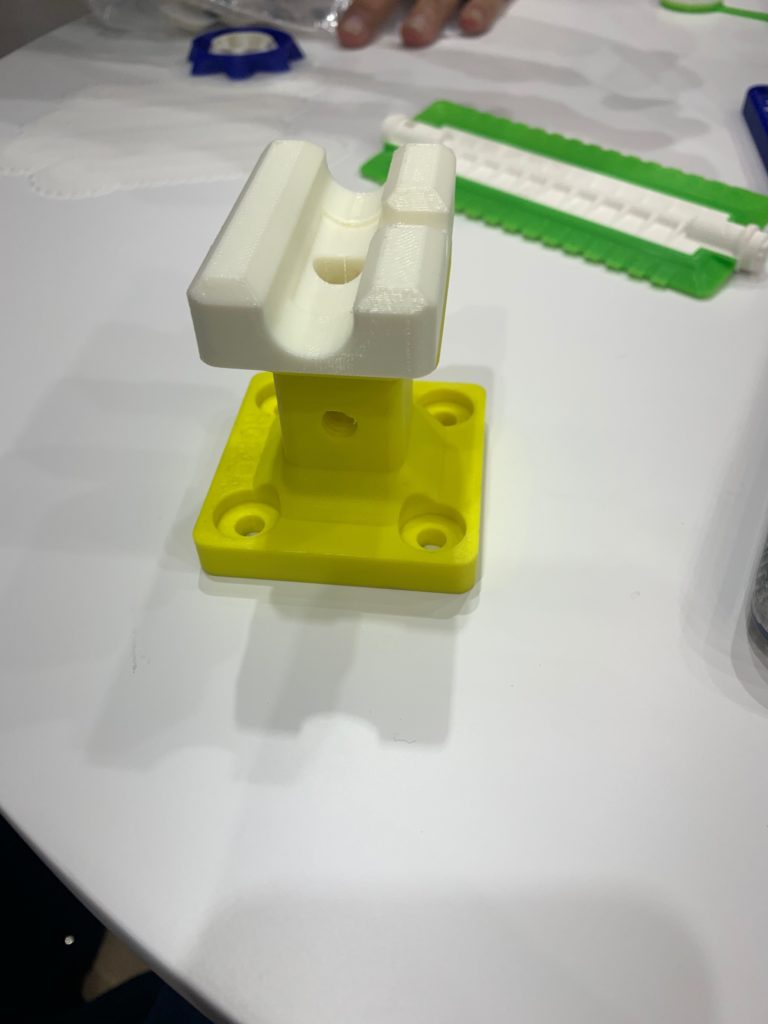
3. Through and through mixed parts of flexible and hard materials at 3NTR. 3NTR makes workhorse printers and they showed me several parts that were a true mix of TPU and hard materials. Yes, we’ve all seen this before but here the adhesion was much better before and they had parts that were printed through and through with TPU and hard materials mixed in. So not two distinct parts but more like a true gradient part. This could really extend the usefulness of FDM.
4. 6K Additive’s Designed Alloys its super nice that 6K wants to make materials from cuttings and other metal waste. But the additional promise of being able to, perhaps, in a cost-effective way make designed alloys that could combine 5 materials with different melting temperatures into a single alloy specifically made for one particular application could have a significant impact.

5. Copper. Many people from GE to Optomec showcased copper parts. I’m hugely excited about copper as a material to aid in heat sinks and other heat management applications and in the electrification of cars. It was possible in a limited way on EBM and some platforms but broader copper applications could move us into new markets.
I was far from being able to see everything so maybe I missed some things here?
6 Top Trends
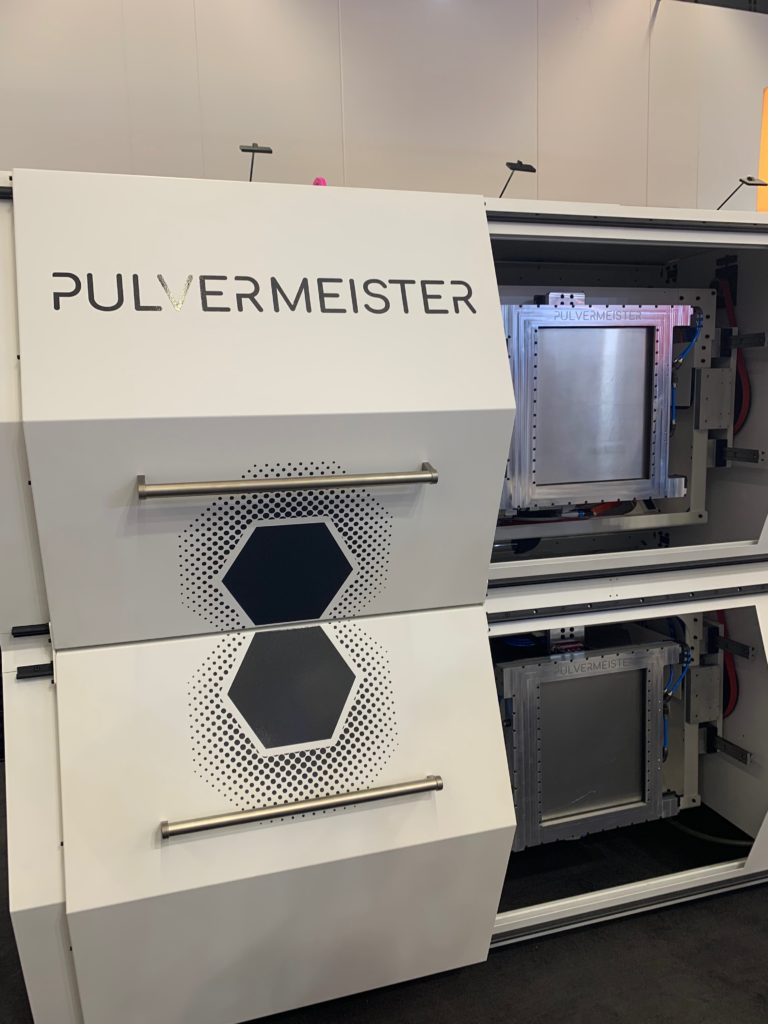
the Pulvermeister is now but one of several automated depowdering solutions.
- Post-processing is happening. DyeMansion, AMT and many other firms showcased post-processing equipment and solutions. This is a real bellwether for our industry and continued growth in this segment would indicate that we’re actually manufacturing.

Clariant can make you this batch in a specific color and it conforms to the relevant FST regulations.
2. Application-specific materials continue to grow. With the growth of materials and with new polymer and metals vendors we’re seeing a lot more materials and material grades. Some are much-needed evolutions such as safer resins, while others are new grades of existing materials or new things like Sabic’s polycarbonate for Sintering which is under development. With better applications and better material and machine fit to those applications, we can really unlock manufacturing.
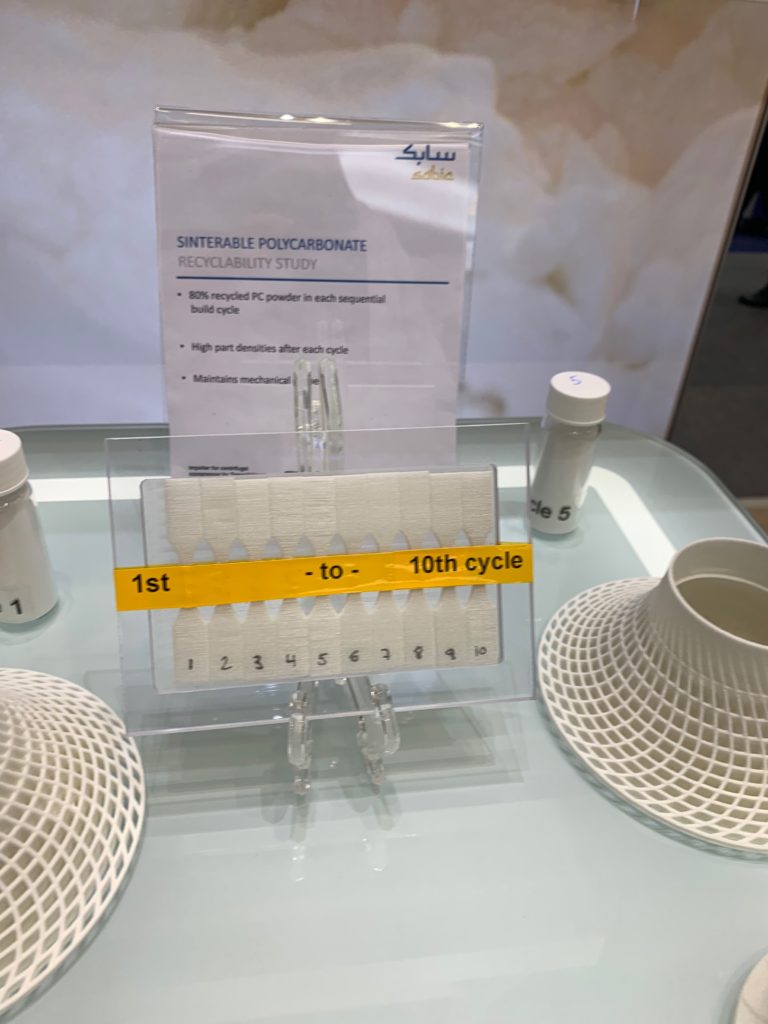
I just can not stop thinking about laser sintered PC. With great refresh and new properties, this could be a great material.
3. Large format in metal and polymers is growing. There are now many more vendors such as polymer firms CEAD and Thermwood as well as companies selling blown powder and wire fed metal printing companies. Will all of these firms find customers? It is doubtful at the moment.
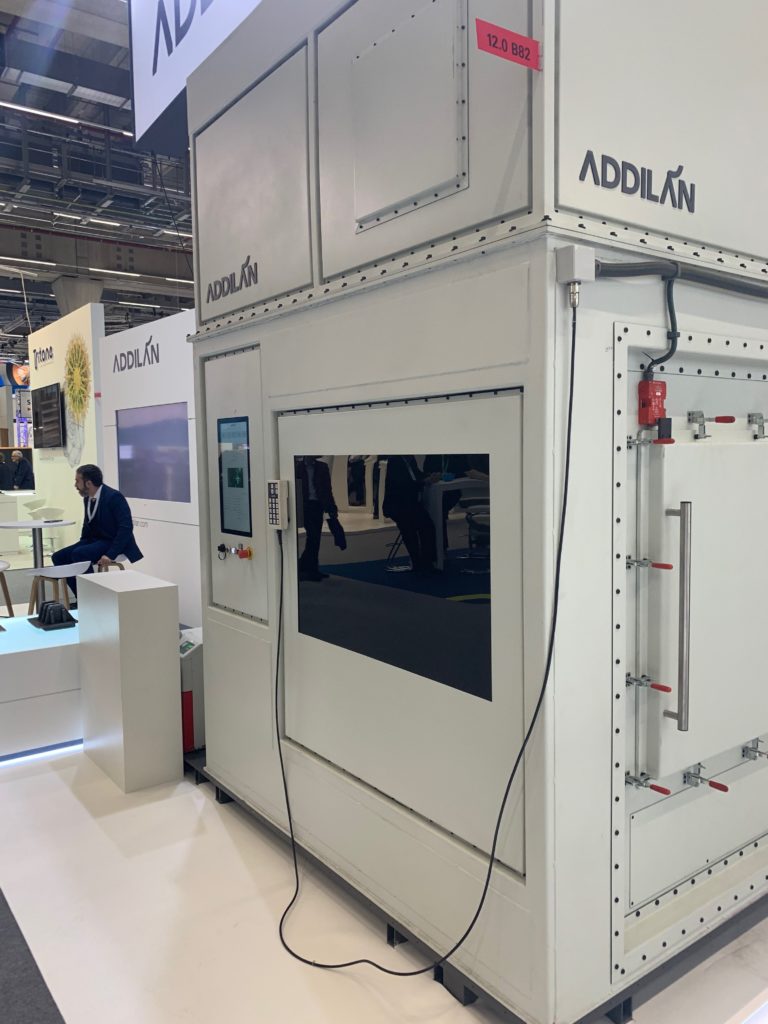
Addilan is a closed loop WAAM technology that could build large scale parts out of metal inexpensively.
4. Polymer companies are in charge. Far from being clumsy gorillas, it seems now that the polymer companies such as DSM and Solvay are managing to develop applications, develop new businesses and create new manufacturing possibilities. They’ve surpassed OEMs and are now in the driving seat.
5. Much new software, all of it confusing. There is a tonne of new software available and its a total morass to the people in the industry. Most of it is super new and we don’t know how to use it. Software is very important to 3D Printing but the landscape is filling with vendors with all claims and no installations.
6. Everyone has an ecosystem, we are a platform, lets all be friends, develop manufacturing applications togehter strategy. Either we’re all super smart together or we’re all making the same mistakes.
It was an awesome time and I’ll see you next year.
The post Formnext 2019: Highlights, Trends and Review appeared first on 3DPrint.com | The Voice of 3D Printing / Additive Manufacturing.
Formnext: Lumi Industries to Present Unique Resin Printer, the Lumi³ (LumiCube)
Lumi Industries has been a trendsetter within the 3D realm for years. If you have been following their progress, then you know their 3D printers are not just performers, but also accessible, affordable, and to top it off: stylishly sleek and compact. And they have no intentions of disappointing now, as Formnext 2019 approaches. Held in Frankfurt Germany from November 19-22, the Lumi team will be there mixing with hundreds of other manufacturers, and many thousands of visitors looking forward to overdosing on the wonders of new technology.
Presenting the Lumi³ (LumiCube), the Lumi Industries team brings forth another user-friendly 3D printer that also offers precision and reliability. Promising to save users both time and money, the Lumi team informs us that with their latest innovation they have integrated new solutions as well as ‘smart little tricks’ that come with the territory after years of experience in research, development, and manufacturing.
Their Easy FEP VAT (EFV) is a patent-pending vat that is both disposable and thermoformed—making life much easy during loading and unloading, and cleaning. Without having to change the FEP film, users can spend more time innovating—and less time dealing with mess, inconvenience, and contamination. The cover of the Lumi³ is designed specifically so that users can look in and oversee the process, viewing the building platform—and taking control quickly if there is a problem.
Post curing is also easier, more streamlined, and more affordable due to the HUT (Hinged Mask for UV Transforming) unit placed over the UV array, with its glass bottom preventing an debris from entering the printer. Parts are then cured from each side, fixed and rotating in a plexiglass basket under UV light.
“I asked myself, since we are using UV LEDs to 3D print, why not to use the same LEDs for post curing?” said Davide Marin, Lumi Industries CEO. “Thus, the patent-pending HUT system was designed.”
“We are aware that many LCD 3D printers are currently in the market, but we found that our patent pending solutions and smart improvements actually make users’ life a lot easier,” says Marin.
Lumi³ (LumiCube) also comes with a modular tray system that prevents the nightmare so often associated with removing prints. Provided for resins that are either medium or low viscosity, one module allows for the plate to be bent slightly and the part removed easily. A different module is provided for high viscosity materials that may have the potential to stick:
“For high viscosity materials with a typically difficult adhesion to the building plate , like our LumiReact Flexible , or ceramic filled resins, we provide a module in which the surface in contact with the resin is made of machined glass, to ensure perfect adherence and a smooth 3D printing process,” explains the Lumi team in their recent press release sent to 3DPrint.com.
A seven-inch touch screen accompanies the software, giving comprehensive user control, and Lumi plans to provide added features soon such as a camera for remote, live monitoring. Currently, the following software features are provided:
- Pre-loaded video tutorial and guides
- Real-time notification
- Printing process reports to include diagnostics
“Our latest project LumiPocket LT came into market in late 2017. In the past two years we have been involved into a quite big project for a multinational company, in which we have been providing our R&D services. This absorbed much of our time and slowed down our own 3D printing projects. Now that work is almost finished and we can complete all the ideas we have in pipeline, LumiCube being the first one,” explains Davide Marin.
“At the beginning of this year we were also initially commissioned for the development of an LCD 3D printer, a technology we have been exploring already in 2015. Afterwards we carried this project forward independently.”
The new 3D printer also includes the following support:
- State-of-the-art hardware
- High-resolution LCD screen
- Parallel UV system
- HEPA and carbon active air filter
- Precision THK linear motion system
“We even added some cool extra features, such as a passive heating system that keeps resin an ideal temperature of 35-40°C, and force sensing sensors to preserve the screen from receiving excessive pressure during the 3d printing process,” said Marin.
Showcasing the Lumi³ (LumiCube), the Lumi Industries team will welcome visitors at Hall 11.1, Stand F18, along with a formal press conference to be held at 4:00 p.m. on Tuesday, November 19th.
Lumi Industries has been a continued presence in the 3D printing market, with ongoing development and new releases, other innovative software—even in Braille, and so much more. What do you think of this news? Let us know your thoughts! Join the discussion of this and other 3D printing topics at 3DPrintBoard.com.
TECHNICAL SPECIFICATIONS
| Technology | MSLA – UV LCD |
| Building area | 120.96*68.04*100 mm |
| Resolution XY axis | 47.3*47.3 µm (2K) |
| Layer Thickness (Z) | 20/30/50/100 µm |
| Av. Building Speed | 30mm/hour |
| Lighting System | Parallel UV LED system |
| Resin Wavelength | 405 nm |
| Resin Vat | Patent Pending Easy Fep Tray. |
| Printer Control | Integrated PC, 7″ Color Touchscreen |
| Printer Operating System | Windows 10 with original Lumisoftware |
| Software | Formware / Chitubox |
| Building Platform | Patent pending interchangeable Modular Tray System |
| Post Processing | Patent Pending HTU, Integrated Post Processing Chamber |
| Input Format | STL |
| Connectivity | Wi-Fi, USB |
| Dimensions | 30*30*50 cm |
| Weight | 13,50 kg |
| AC Input | 100-240v |
| Safety feature | Ventilation system with HEPA + active carbon filter |
| Operating temperature | External 18-30°C Internal automatic control at 35-40°C |
[Source / Images: Lumi Industries]
The post Formnext: Lumi Industries to Present Unique Resin Printer, the Lumi³ (LumiCube) appeared first on 3DPrint.com | The Voice of 3D Printing / Additive Manufacturing.
Henkel & Shapeways: Large-Scale Manufacturing with Loctite Materials
Together, Henkel and Shapeways are reaching for bigger and better solutions in 3D printing, complementing each other in partnership to expand large-scale manufacturing of Loctite materials. The two companies will be exhibiting at Formnext, presenting more about their work together from November 19-22 in Frankfurt.
 Germany’s Henkel is a global adhesive technology leader, while Shapeways is undeniably one of the leaders in product creation, offering a platform for others to see their ideas fabricated on demand. As accessibility and affordability in 3D printing continue to sweep the world, the two companies are on a mission to help other companies integrate 3D printing and 3D printed components into their production lines—and especially with the use of the next generation resins included in the Loctite brand. Shapeways provides both the technology and capability for enhancing materials and presenting even greater accessibility to industrial users.
Germany’s Henkel is a global adhesive technology leader, while Shapeways is undeniably one of the leaders in product creation, offering a platform for others to see their ideas fabricated on demand. As accessibility and affordability in 3D printing continue to sweep the world, the two companies are on a mission to help other companies integrate 3D printing and 3D printed components into their production lines—and especially with the use of the next generation resins included in the Loctite brand. Shapeways provides both the technology and capability for enhancing materials and presenting even greater accessibility to industrial users.
 Currently, the two companies are launching the ‘Loctite Powered by Shapeways’ multi-step program, which allows users to order predefined Loctite demo parts, including a new photopolymer for fire safety standard UL’s 94V-0.
Currently, the two companies are launching the ‘Loctite Powered by Shapeways’ multi-step program, which allows users to order predefined Loctite demo parts, including a new photopolymer for fire safety standard UL’s 94V-0.
“We are excited about the collaboration with Shapeways as a leading technology platform for customized 3D printing solutions,” explained Philipp Loosen, Head of 3D Printing at Henkel. “Combining Shapeways’ technology and production expertise with our materials know-how and industry access enables a powerful combination for the large-scale 3D printing of customized Loctite parts. Based on the partnership, we will launch a digital platform leveraging novel opportunities to its global customers for Loctite solutions in 3D printing through Shapeways’ existing platform integration.”
Both Henkel and Shapeways have been in the news recently. Henkel—a 143-year-old company—has continued its presence in the 3D printing market, further strengthening it with their Loctite brand and division. They continue to operate the bulk of their global portfolio in other technology, innovation, and branding to include adhesives, laundry, home care, beauty, and more. They also continue to lead as a force in sustainability.
As the two powerful forces combine resources in working together, they will be able to build on the strength of Shapeways, with factories and offices in New York, the Netherlands, and a network of other partners around the world. Shapeways has continued its dynamic presence, with a recent e-commerce integration with Etsy, a customized jewelry collection, and accelerated expansion.
For the future, the 3D printing partnership is on a mission to continue enhancing the functionalities they have created, ultimately allowing customers for Henkel to order industrial Loctite parts. If you will be attending Formnext next week, find out more about their new program at Hall 12.1, Booth C41.
What do you think of this news? Let us know your thoughts! Join the discussion of this and other 3D printing topics at 3DPrintBoard.com.
[Source / Image: Henkel / Shapeways press release]
The post Henkel & Shapeways: Large-Scale Manufacturing with Loctite Materials appeared first on 3DPrint.com | The Voice of 3D Printing / Additive Manufacturing.
BCN3D Epsilon 3D Printer: High Performance Addition to the Industrial Workbench
With over 600 exhibitors at Formnext this year, it is impossible to know exactly what huge surprises the show will hold for over 28,000 visitors, but one thing is for certain: there will be numerous high-powered 3D printers to check out from November 19-22 in Frankfurt. And as they continue to position themselves as leaders within the 3D printing industry, BCN3D will be presenting their BCN3D Epsilon, created for mass printing, offering independent dual extruders, and a passive, enclosed heat chamber.
Meant for high performance and demanding requirements, the Epsilon brings power to the industrial workbench, and is already captivating industry leaders like BMW, Nissan, Seat, and Renault—all companies BCN3D is currently working with.
“BCN3D Epsilon is a productive printer, thanks to its capacity to process large volumes and its IDEX technology,” says Eric Pallarés, CTO of BCN3D. “Its 5-inch touch screen and cloud connection features make it easy to use. It is versatile and is compatible with a large range of hotends and materials. And it is safe because it comes equipped with industrial grade HEPA and carbon filters and an emergency stop feature.”
Along with the heated build chamber, other unique features include:
- Use of fiber-reinforced materials for industrial applications
- Enormous capability for print volume
- IDEX technology for increasing productivity
The Epsilon represents a massive step for BCN3D, after their recent spinoff from incubator venue—and technological center—CIM UPC. Their latest innovations also follow on the heels of both their Sigma and Sigmax desktop 3D printers, and the raising of 2.7 million euros in private capital.
“BCN3D started to develop some of the features of BCN3D Epsilon even before the spin-off last March. At that time, we were able to expand the engineering team and invest more resources. That was the starter pistol that signaled the official launch of the projects, even though many things had already been approved and designed,” says Pallarés. “BCN3D was designed as a desktop printer manufacturer and will stay there, no doubt. However, the desktop market has a lot of players and there is more competition than ever before. In addition, the entire market has matured and now it expects more from 3D printing than what it did just a few years ago”.
The BCN3D team has also been working with BASF and Mitsubishi Chemical (MCPP) to offer new industrial filaments compatible with the Epsilon. Along with the launch of their powerful new printer, BCND3D will also be presenting the BCN3D Cloud, a cloud-based platform that allows users to print 3D files from anywhere.
The Epsilon “represents a new phase for desktop 3D printing, one that will take it to more industrial settings. We are facilitating the use of industrial materials such as ABS, polypropylene and polyamide. Up until now, affordable printers could not offer any guarantees when working with these materials,” says Xavier Martínez Faneca, CEO of BCN3D. “We are also introducing materials with composite fibers, because the characteristics of this new printer make it possible to do so.”
“A new product is always a good sign. Ever since the spin-off, we have worked very hard to present this product, the first of many. We want to be identified as a major player in the industry and this product and its features will help us gain visibility. Furthermore, it will open up new business opportunities that will most certainly be beneficial in the future.”
The BCN3D Epsilon is priced at 6,995 euros + VAT, with units shipping in mid-December. As of now, you can reserve your own unit with a ten percent discount from the BCN3D website, or via distribution partners. Visit the BCN3D team and check out the BCN3D Epsilon at Formnext 2019 in Hall 11.1, BCN3D Stand 111-F51.
What do you think of this news? Let us know your thoughts! Join the discussion of this and other 3D printing topics at 3DPrintBoard.com.
[Source / Images: BCN3D]
The post BCN3D Epsilon 3D Printer: High Performance Addition to the Industrial Workbench appeared first on 3DPrint.com | The Voice of 3D Printing / Additive Manufacturing.





